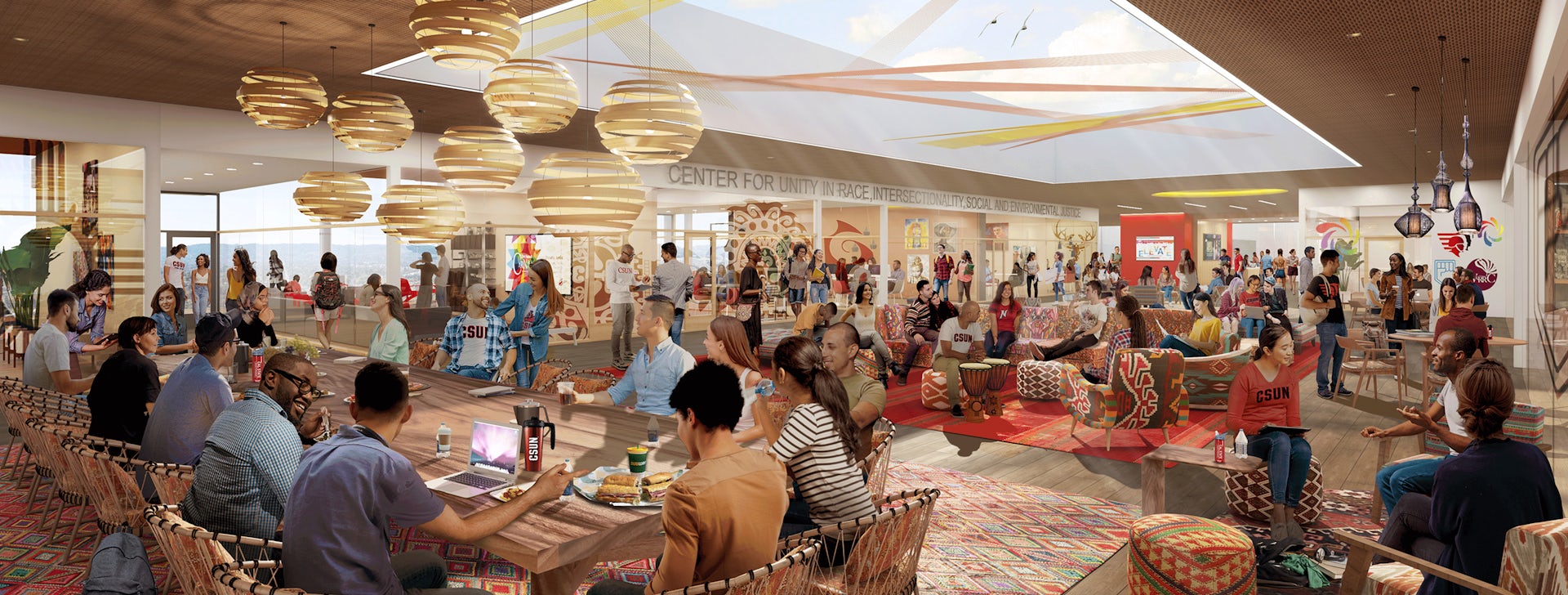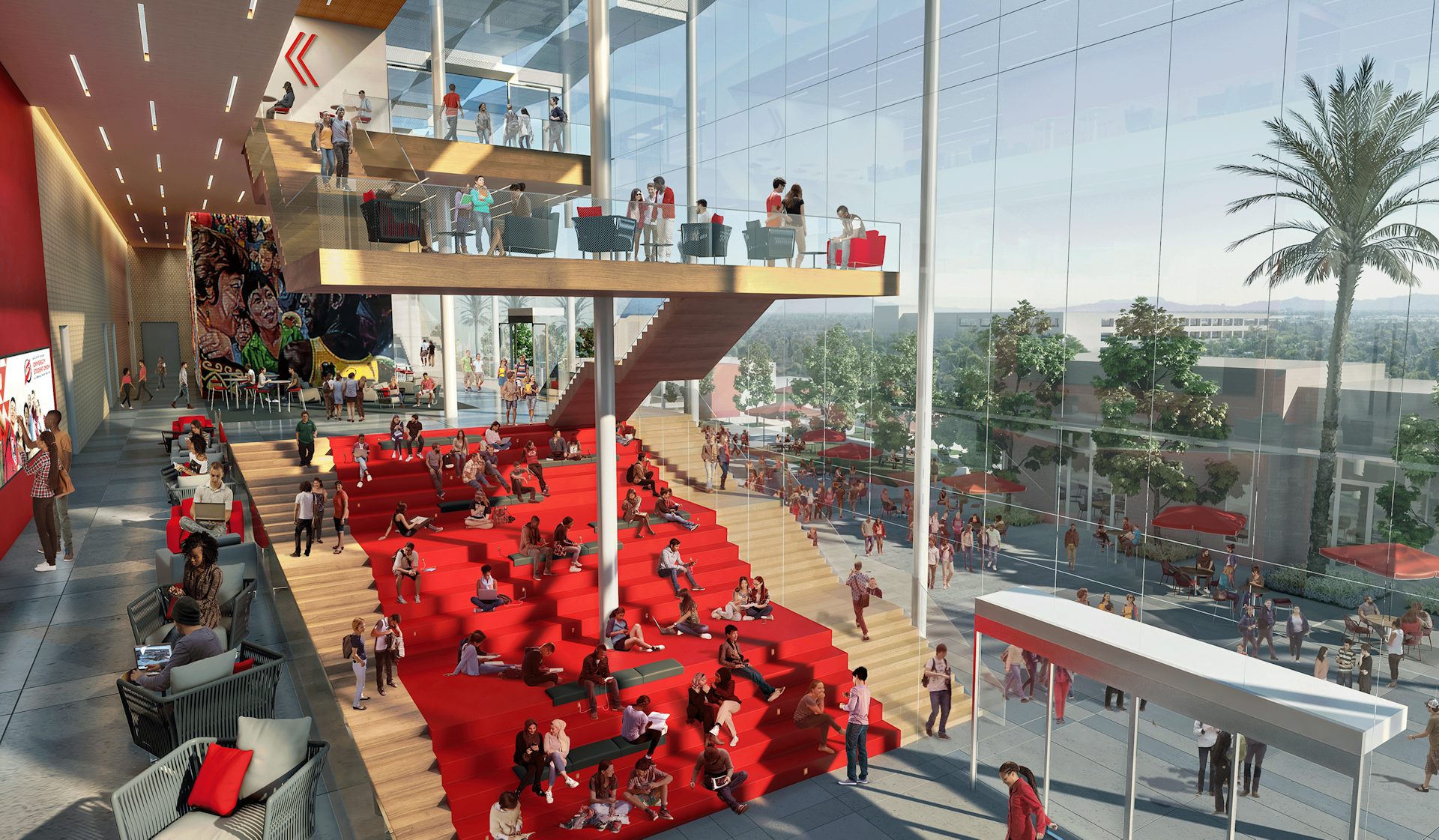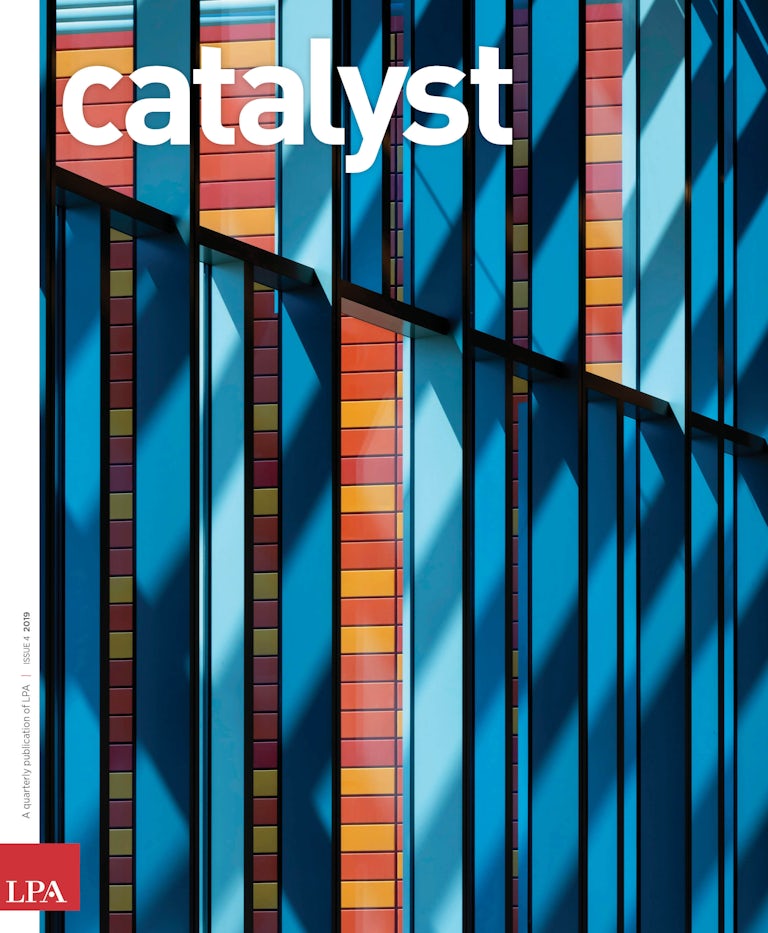Over the summers of 2017 and 2018, a group of LPA designers embarked on a cross-country journey with students, faculty and staff from California State University, Northridge to explore the essence of the modern university student union. As part of this research process, they visited 10 universities, engaging with students and educators about campus life and the role of the environment in supporting student success.
When they returned, they were asked tough questions about their experiences and the evolving needs of students. “The goal was to understand how their peers have been addressing the next generation of student life and how have they been helping their students succeed,” says LPA Associate Winston Bao. “We really tried to understand the experiences we were exploring and envisioning.”
Beginning in 2015, program managers at Brailsford & Dunlavey performed utilization and demand studies through multiple rounds of focus group and electronic surveys. Over the following 12 months, more than 9,000 students participated in the engagement. The analysis demonstrated the student union is lacking social, food and programming spaces, which students identified as high priorities. The complementary data generated by the whirlwind tours laid the groundwork for designing a student union expansion and renovation for CSUN that would reflect the needs and goals of the rapidly changing campus.
Forward Thinking: The Future of Student Unions
A student-led process helped design a next-gen facility focused on developing students’ minds, bodies and spirits.

Students and the University Student Union repeatedly emphasized the social and cultural influences changing the campus landscape. From the growing numbers of adult learners and veterans to the expanding base of international, underprivileged and underserved students, research shows that demographics and the evolving learner profile require comprehensive environments that address the whole student—mind, body and spirt.
As with other peer institutions, CSUN knew there were real challenges on the campus that needed to be addressed. A 2013 study found that stress and sleep deprivation were among the top academic challenges facing the nearly 40,000 students that CSUN serves. Students often left campus during the day or ate lunch and slept in their cars. The university wanted to reach students who often feel left out of campus life, to create a space where they can interact with their peers and have an authentic experience of belonging.
CSUN really wanted to create this opportunity for students to engage and a place they could call their own, they wanted to make their students feel more connected and create a broader sense of community on campus.

Traditionally, the student union has been a transactional facility—the place to buy books and food, and maybe a t-shirt or supplies. They tend to be catch-all centers for elements of campus services. They often struggle to meet current student needs, with limited funds available to renovate or replace older facilities.
CSUN needed to finance this transformation through an increase in student fees, which made it essential that the solution addresses core interests and issues facing the student body. Once the data from the site visits were gathered and analyzed, the designers and planning committee embarked on engaging the campus community to further support the research efforts in understanding the design problem. “We gave them a blank canvas,” Bao says. “We said, ‘here are the opportunities, what is your vision for it?” Concepts emerged from the discussions; students were able to comment on what they liked and didn’t like. New ideas were explored. And it soon became clear that the students had their own image of what they wanted. They talked about openness, a connection to the environment and a facility that would offer students healthy choices. But there was also something deeper in the conversations.
“The main thing was to find a safe place,” says LPA Senior Project Designer Silke Frank. “They wanted to create a home for everybody.”
The final design concept for CSUN presents a reimagined vision for the role of a student union on campus. It is a fusion of purposes, linking fitness, health and well-being with academics. The new union connects directly with the neighboring Student Recreation Center and the Oasis Wellness Center, also designed by LPA, creating a new cohesive destination for student life on campus. The Wellness Center, which opened in 2015, is already a hit; the center logs an average of 400 visits on peak days and more than 2,500 reservations to use “nap pods” every semester.

More than simply a place to eat, the new student union will serve as the university’s cultural and social center, addressing all aspects of the diverse student body. The design for the three-story expansion opens the building to the campus, blending with a shaded promenade that makes the outdoor spaces a key feature of the complex. The first floor creates a central destination to gather, study, eat and play. The space is designed for flexibility and connection; students may gather in small groups or in larger groups for campus activities. The second floor is an event center, a place for celebrations, orientation, student events, meetings, concerts and campus festivals.
The centerpiece of the facility is on the third floor—a cross- cultural center, which will create a place for students of all backgrounds to gather, find support and connect. In addition to a variety of services, the center will provide spaces for students to socialize and study in a welcoming environment. Communal areas promote casual interaction and group discussions, but there will also be rooms for counseling and education, bringing together all the different campus groups and organizations.
“We toured a lot of different places and we didn’t see anything like this,” Frank says. “This was something that came directly from the students, who were asking for a unique destination that specifically supported diversity and inclusion.”
Concepts of diversity and openness can be found throughout the building. The planning and spatial arrangement support different experiences for the students, bringing them together in different, often random ways. “The good stuff doesn’t only happen in the classroom,” Frank says. “Students learn from one another and sometimes this learning happens in unexpected places and at unexpected times. We want to give them those opportunities.”

The transparent metal veil that covers the top portions of the building provides shading over the promenade, while reinforcing the theme of diversity and inclusion. “The weave cladding was inspired by the idea that there is strength in unity and diversity,” says LPA Design Director Franco Brown. “The veil gets its strength from all the different fibers. Each of the fibers is a different texture and a different color,” alluding to the diverse background of the student population.
In May, the students approved an increase in student fees, starting in 2022-23 when the facility opens, to pay for the new student union expansion and comprehensive renovation, with 61 percent voting, “Yes.” Students interviewed after the vote talked about the benefits of the facility, environmental stewardship and the return on investment, even though most will only use the facility for a few years.
“Current students are investing in future generations of students,” Bao says. “We talked about leadership, and what they would be leaving behind, which is a legacy to help those future students succeed and prepare them for their journey.”
This story originally appeared in Catalyst Issue 4 2019. Subscribe today to receive Catalyst, a quarterly publication that takes a deep dive into design ideas, industry leaders and initiatives.















